During our two-week tour of Slovenia in early September, we tried to take full advantage of the unique geography and individual character of the different regions of the country. What we found was that there were two dominant features we’d visit again and again. Grad is the Slovenian word for castle, and jama is the term for cave. They were all over the country and compelling to visit. So, much of this post will be about caves and castles. However, there was also amazing wine country and a “only here” visit that was surprisingly interesting and fun. So, let’s start there!
Lipica Stud Farm
Turns out that Slovenia is home to the world famous Lipizzan horse breed. If you’re not familiar, they’re majestic white horses trained to perform moves of classical dressage, which involves riding in formation and making amazing two-legged jumps with a rider on back. You’ll see a lot about the Spanish Riding School, but the Lipica Stud Farm does their own training and has one of the top breeding programs for Lipizzaner horses in the world. We took a tour of the facilities and were amazed by just the stables. These talented horses live well.

These individual stables are large, very clean, and are customized for each horse. Each stable has a detailed plaque if the horses lineage and another “menu” detailing the individual’s diet and nutrition needs. These classy apartments were for the elder horses who have earned their place through years of training, performing, and making more horses.
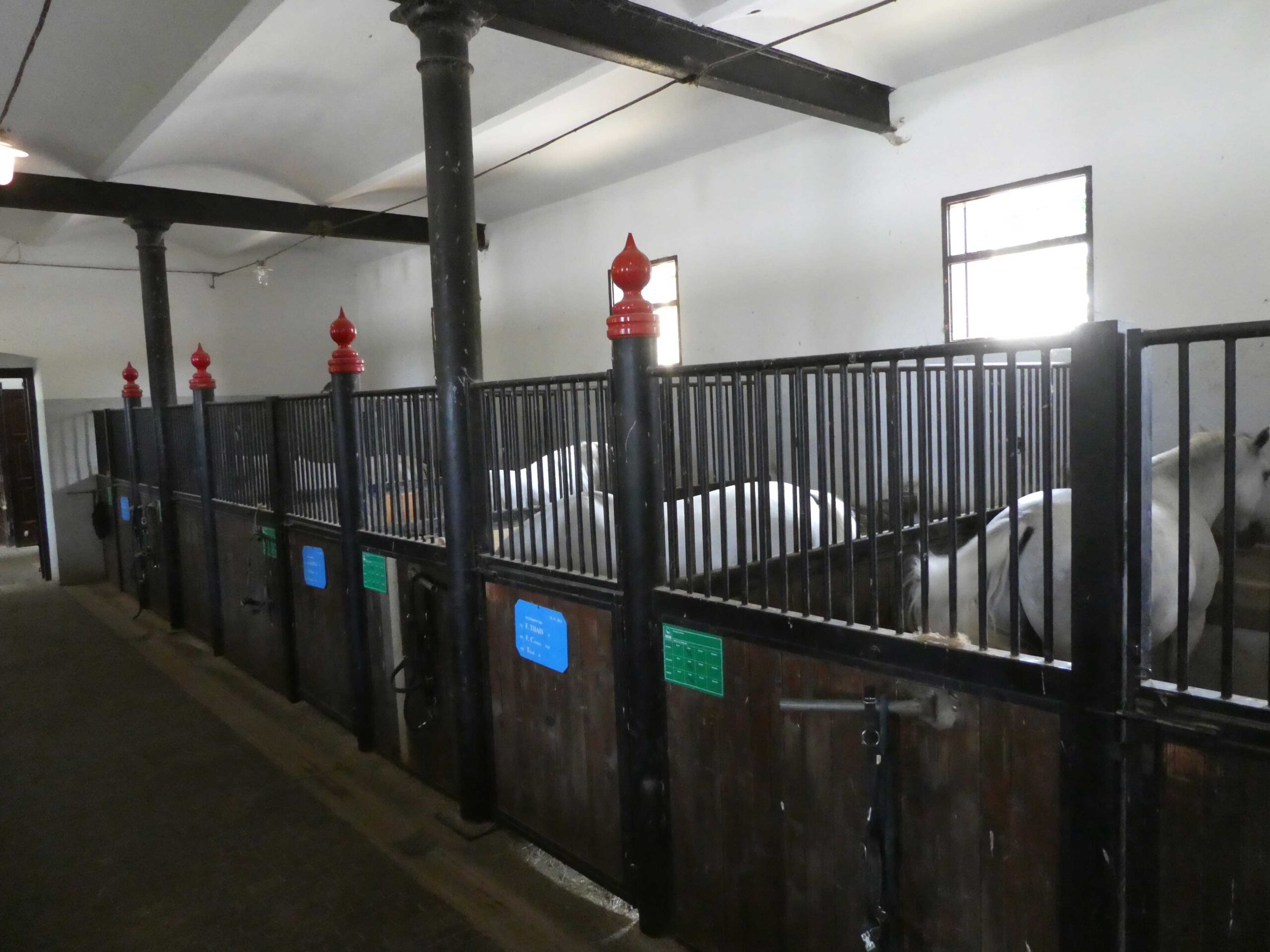
Take a step down to the larger stables where the younger stallions are housed, and you’ve still got some pretty nice digs. Visitors can socialize with the horses and touch them as the horses themselves are willing. Each horse has a daily routine of nearly 2 hours of training a day, and have a regimented routine to keep them healthy and fit for performance and competition.
The mares are primarily free to roam the huge property, caring for the for the foals and teaching them to function socially in their horse society. Guides point out that one elder mare is considered the grandmother who sets an example for behaviour and keeps the younger horses in line. Lipizzaners are born grey, and develop the white coat as they mature. It is common to see large groups of horses outside the stables.

This foal was only interested in the grass outside the fence. Try as Ande might, he just wasn’t interested in chatting.

There was a hugely informative museum that detailed how the the farm property itself and the horses have been preserved over the many, many years of invasions, conflicts, and wars in the region. The horse population has actually been moved out of the region several times via train and then reestablished on the property when whatever tragedy passed. It really is an amazing story and a wonder the breed has survived at all. The property is also home to a former hotel that is now primarily occupied by cats and no longer in use by humans. We didn’t get to tour that. There’s also performance facilities, breeding facilities, training facilities, and anything else you could imagine horse related. We were really glad we didn’t pass up the opportunity to visit this unique place and learn more about these amazing animals.
Slovenian Wine Country
Wine in Slovenia is very good and inexpensive. Wine is just a part of daily life and the grapes grow everywhere. Enjoying good wine was definitely one of the highlights of visiting Slovenia. After visiting the Karst region, where we saw the horses and most of the caves, we headed to the eastern part of Slovenia and based ourselves in Ptuj. So, the “j” sounds like a “y” in Slovenian, so your guess about how to pronounce the town is correct. It sounds like spitting. It is P-TOO-ee. Locals say Slovenia is shaped like a chicken facing east. Ptuj is about in the neck of the chicken, and we drove the Jerusalem wine route that makes a circle around the chicken’s head. We’ve shown some idyllic pictures of our visit to the lake areas of Bled and Bohinj. Jerusalem and the surrounding area was just as ridiculously unreal in character. It was harvest season, and the vines were fully green and hanging ripe with fruit. The criss-cross patterns of the vinyards created a textural pattern across the rural landscape. Each little town we drove through had a small shrine at the entrance. Here are some pictures that will fully fail to capture the experience.

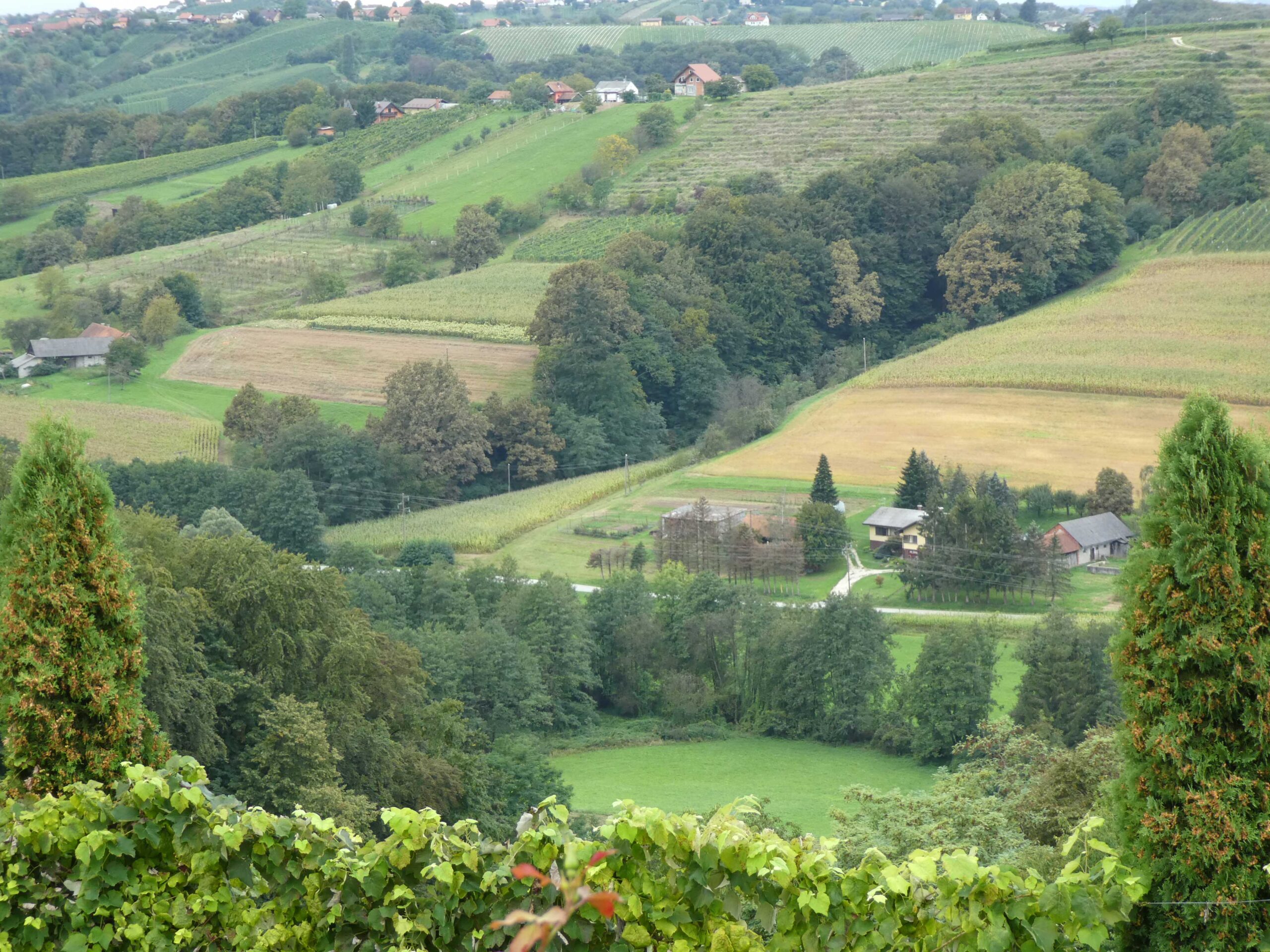
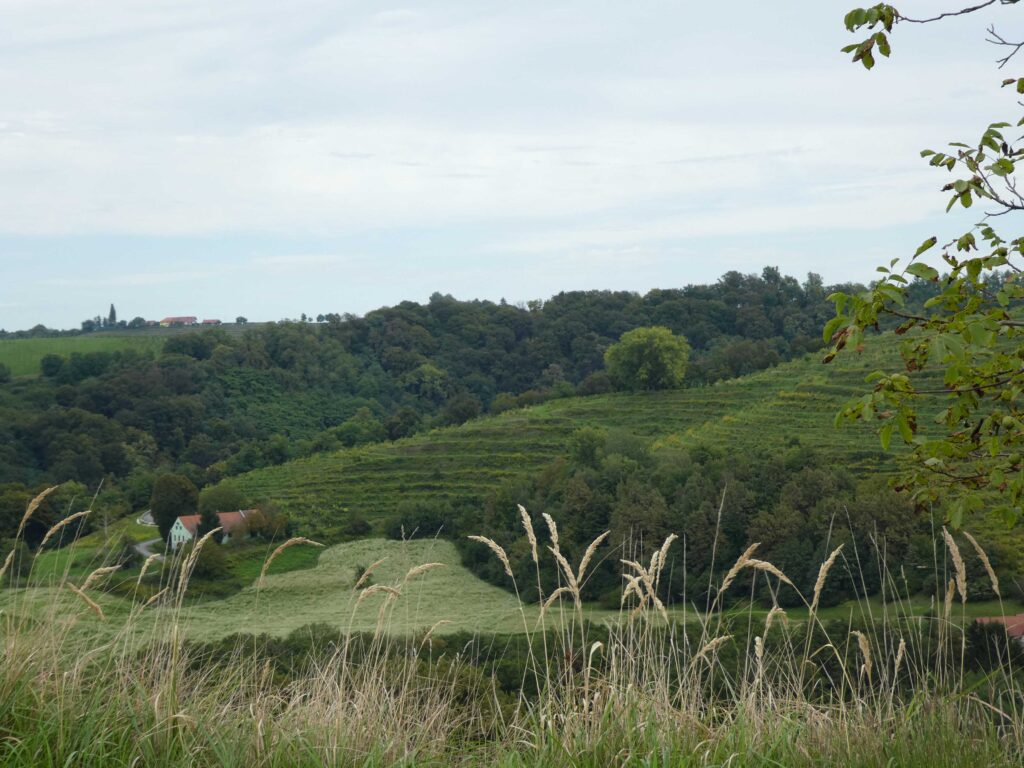
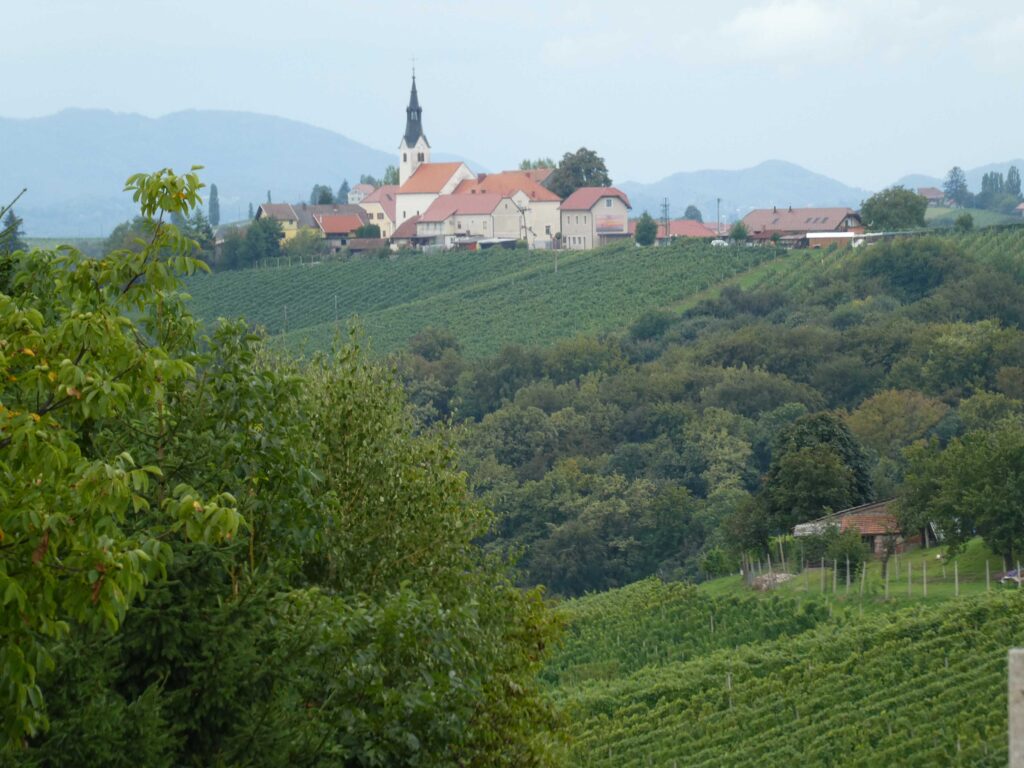
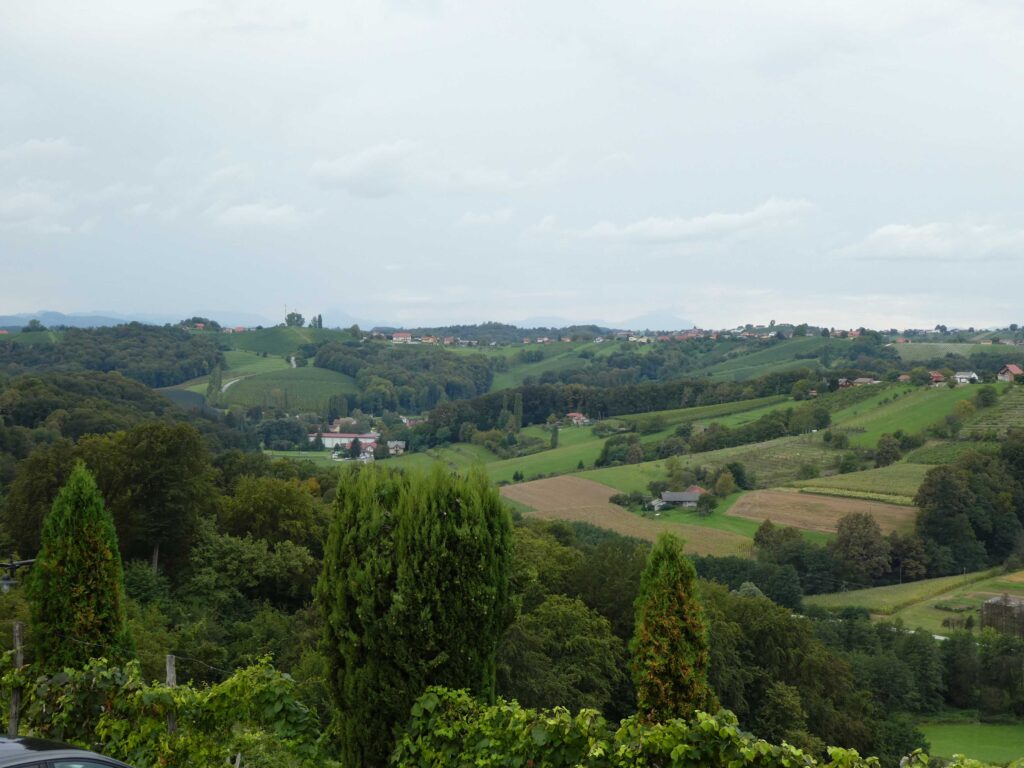
Yes, we were sad to leave. We had an amazing lunch and tried several wines on our stop in Jerusalem. We also saw some agro-tourists who were there to help harvest grapes. Maybe on another trip.
Karst and Caves
Slovenia is a major destination for visiting caves because much of the country is within the Karst Plateau. There’s a lot of geology and science attached to what makes the region unique for developing caves, underground rivers, and disappearing lakes. (Yes, that is a thing, but we didn’t take pictures because the lakes weren’t there in the Autumn–they disappear during the Summer. True, not a bad joke.) Karst areas are made up of permeable limestone. Surface water drips through and eats away at the limestone resulting in some spectacular underground formations, and some pretty amazing ones on the surface. In the case of the disappearing lakes, Spring rainwater and runoff causes underground rivers to rise and flood entire valleys. As the water recedes and drips back underground, the lakes disappear in the Fall and Winter. All we were able to capture were huge green valleys with roads on causeways. We’ll need to return in the Spring to enjoy the lakes.
What we were able to tour and enjoy were the huge underground cave/amusement park complexes of Škocjan jama and Postojnska jama, two of the most developed, touristed, and largest cave complexes anyone can visit anywhere in the world. For a unique bonus, we also hiked around the remains of a once glorious cave complex after it’s collapse in Rokav Škocjan.
Škocjan Caves
Our cave tours started with Škocjan Caves, where unfortunately, they did not allow photography. There are just far too many people going through and people taking selfies is too much of a distraction from what you are actually experiencing. It was a bit of a drag to not be able to capture these natural wonders, but we understand. We’re too attached to our electronic devices, and being fully in the moment of wonder without being worried about what we didn’t capture was incredibly freeing. It was a great experience.
The entrance to Škocjan Caves is a human-built tunnel that is somewhat narrow and similar to a concourse entrance in a large stadium. We have to say that Andrea was a little apprehensive about visiting caves. It isn’t uncommon to be terrified by the idea of being underground in a in a dark and enclosed space. It can make even the most adventurous person apprehensive. She did fine as the narrowest part was the entrance. Once you get inside, you’re in massive chambers beneath the earth. It is truly where Gandalf met the Balrog in battle. All along our constructed stairs and walkways, you can see where the original cave explorers clung to the sides of the walls on sketchy stairs. We’re just not going to be able to describe it better. We bought a book with pictures to remind us how amazing it was. Please visit the Škocjan Caves photo gallery to get an idea. Andrea was glad she made the journey, and it is no small feat to overcome the anxiety of being in such and enclosed space.
Rakov Škocjan
The Rakov Škocjan valley was an unexpected bonus visit thanks to our hosts and guides at the Lippizaner Lodge, Chris and Hanna. Visit their website, visit their lodge! The surrounding area is amazing. the lodge is in the little village of Landol, near the larger city of Postojna. You can see some of the amazing sights in the area on the Postojna website. Chris was continually saying that the region in Slovenia has world-class destinations and he doesn’t understand why more Americans don’t travel there. Be careful what you ask for, Chris. We’ll send people. Our tour of the park at Rakov Škocjan was an exploration of a cave that once was. It is called the valley of arches, because there the multiple arches are all that is left of cave ceilings that have collapsed. It is a unique experience to wander around a landscape and imagine what is was before after having visited one of the intact caves. Here are a few pictures from our hike.
This “cliff” was once the roof of the cave with a chamber below. The afternoon sunlight provided just the right glow to highlight what was once the entrance to a grand cave chamber.
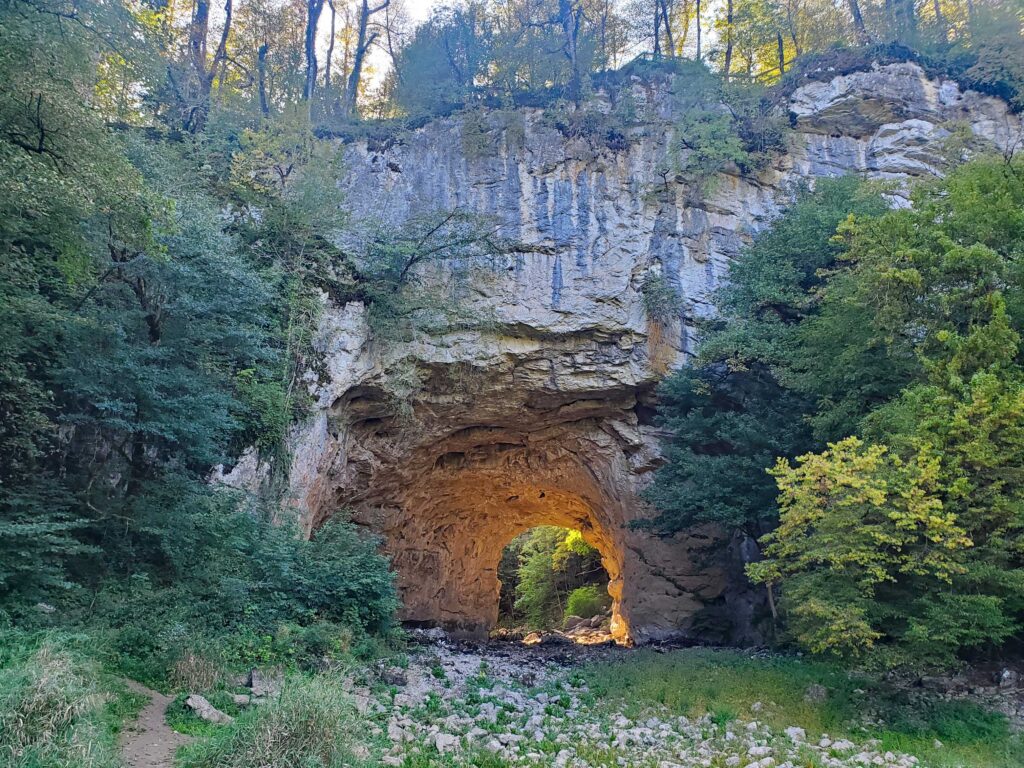
We hiked along the old trails that were once inside the cave that followed the path of a stream that was once an underground river. The once huge underground chambers are now exposed.
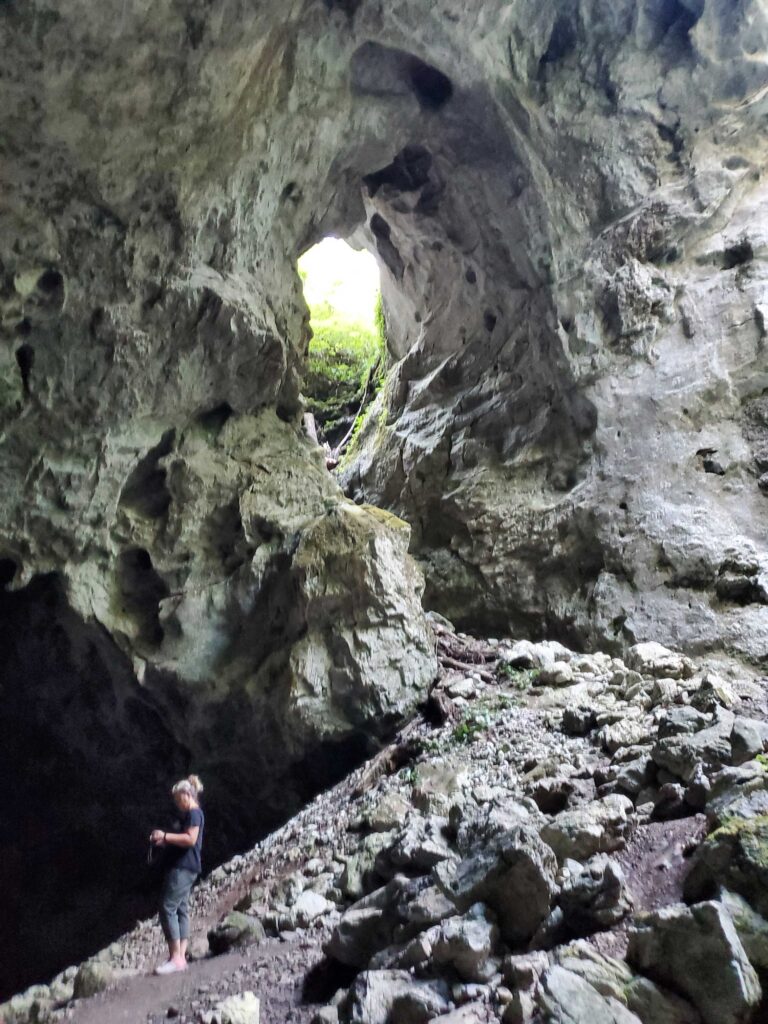
Look closely, and you’ll see Andrea waving from the top of this huge stone arch that is all that is left of the original cave ceiling. The valley below was once part of an underground cave complex.
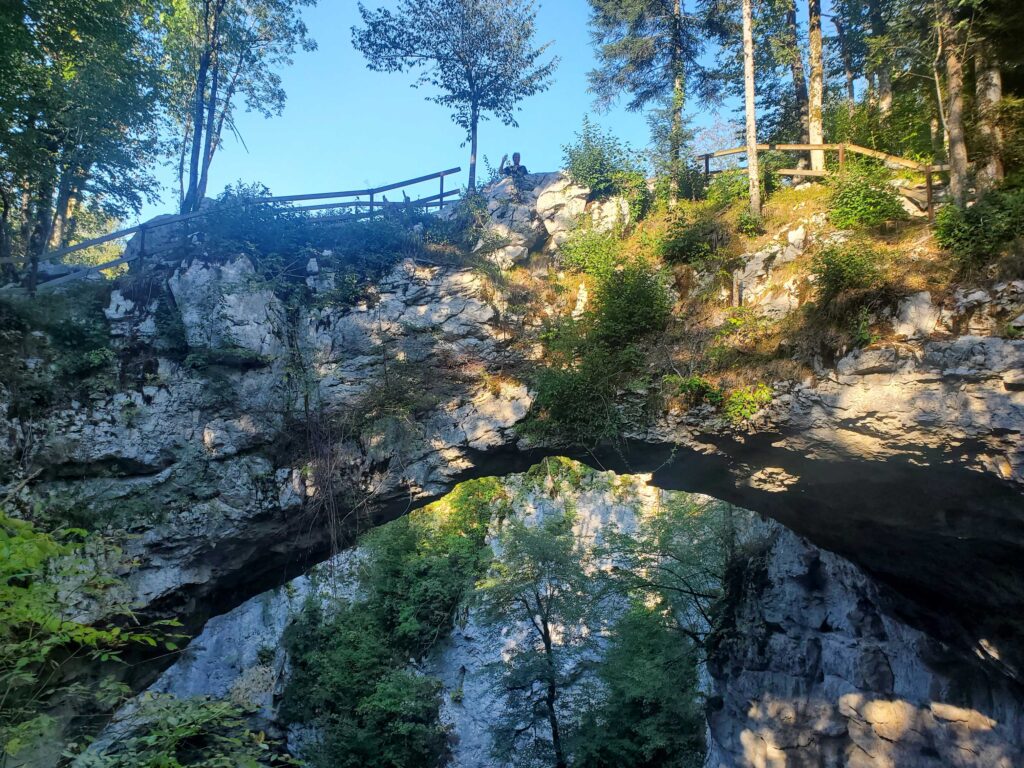
This remnant of the cave chamber gives you an idea of how big the underground rooms were. Look closely, and you’ll see tiny Jake standing on an natural stone bridge spanning the once underground river running through the cave chamber. All of these wonderful formations are the result of the collapse of the cave ceiling and nature filling in the gaps. This picture really helps you imagine how big the underground chambers once were.
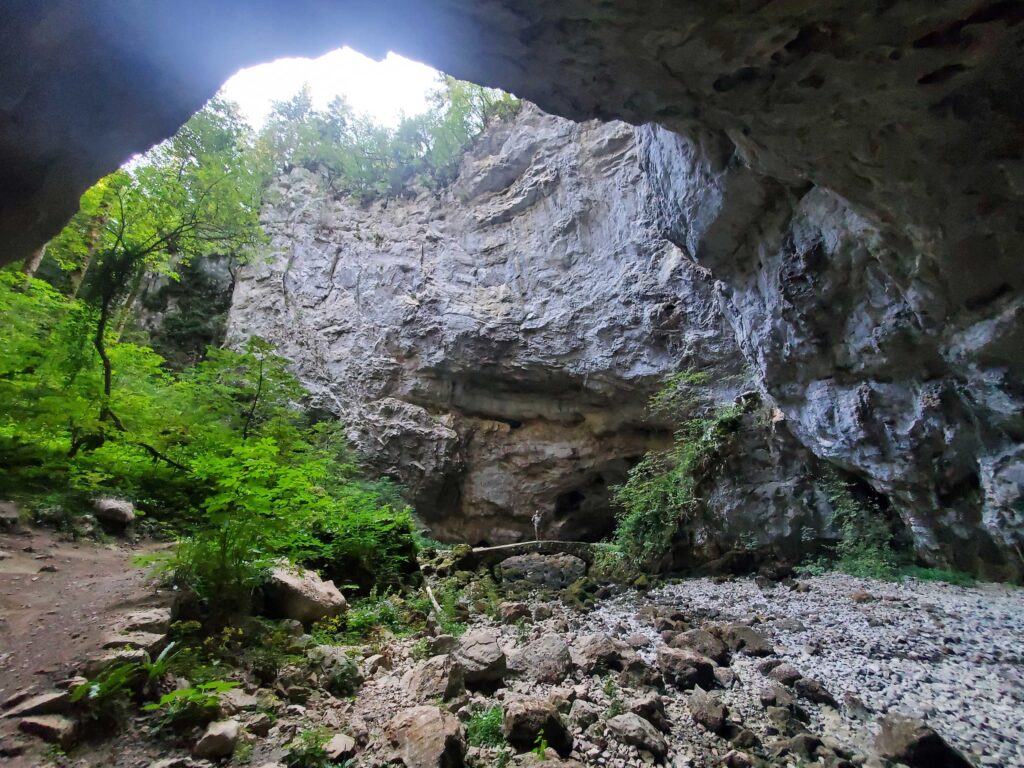
After having visited an intact cave system, it really provided some perspective on the landscape we hiked through at Rakov Škocjan. Without that previous experience, we wouldn’t have had nearly the awareness of what these arches and walls really represented. It was a unexpected and wonderous.
Postojnska Jama
And then there was the amusement park of caves, Postojnska jama. Nothing prepared us for this experience. We read that the cave system was so vast that the tour was partially on a train because there was simply too much to walk to get the full experience. After riding the train deep into the cave complex, you get out and walk at least another 3 kilometers before boarding the train again to get to the exit. Postojna cave is so real it is hard to believe. In the videos we’ll share, you can hear us wondering how what we were experiencing could possibly be real. The limestone formations from millions of years of dripping water defy description. These are cathedrals of time where there’s a train that gives you the privilege of experiencing it. As if the caves by themselves weren’t enough of a mind-blowing wonder, the developers topped it off with a huge hotel, spa, and restaurants with guided tours on rail and foot. Inside the caves, some of the chambers have been developed to host concerts and regular events. You can only believe it if you go there. Again, here’s the tiny part of the experience we captured to share.
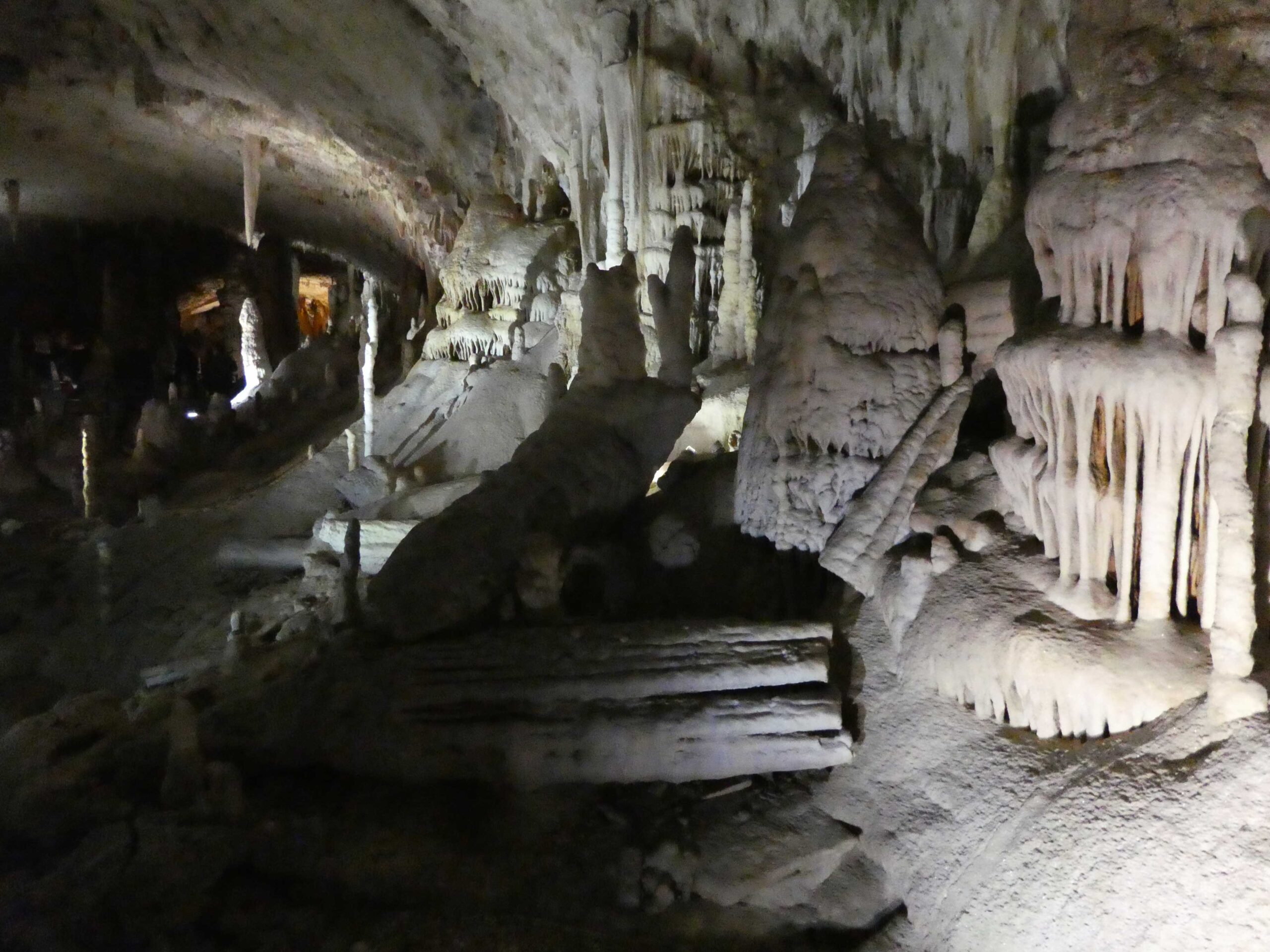
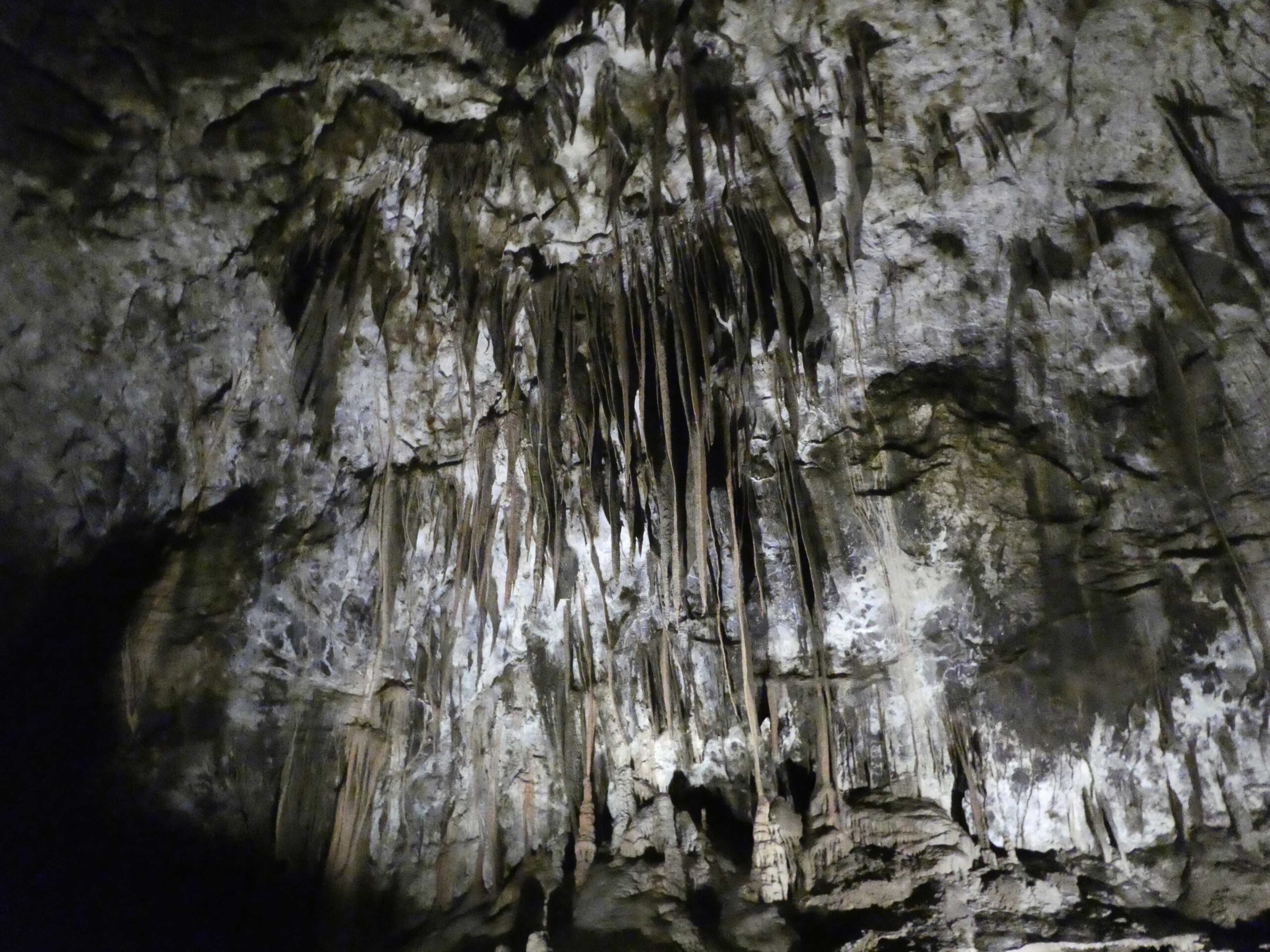
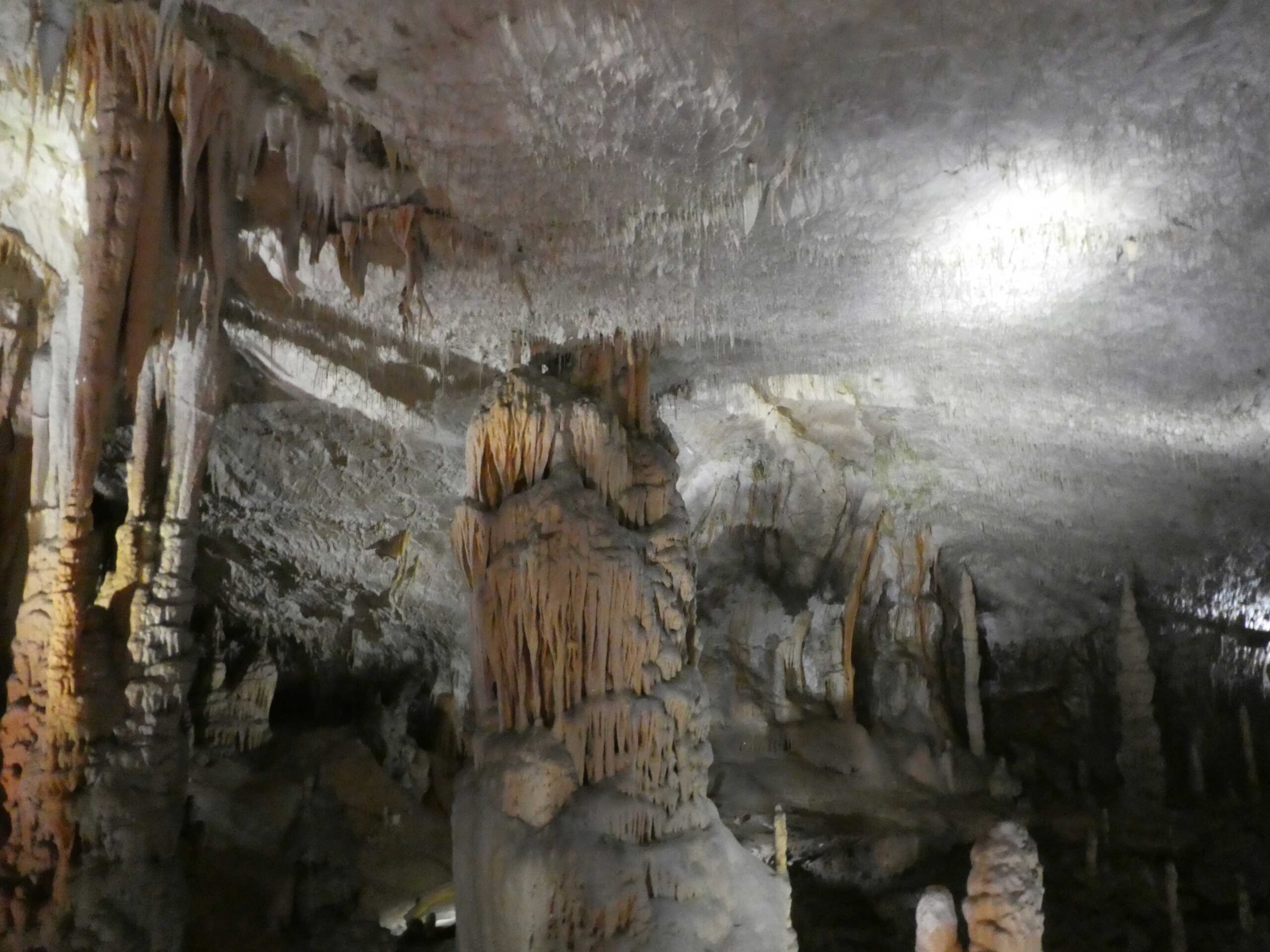
These are just a few of the photos we took attempting to capture how big the chambers actually are without anything for scale. To give an idea of the amusement park side of the experience, here are some videos from our train rides, commentary included.
Finally, the Grads
Probably too much to jam into one post, but after horses, wine country, and the amazing underground, we finally get to the fortresses on the hills. Slovenia has had a turbulent history in which it has somehow maintained a unique identity while under the rule of invaders. With so many threats from outside the country, it isn’t hard to believe that there’s a castle on every hill. We only got to visit a few that we’ll share here.
Predjama Grad
While staying at Lipizzaner Lodge, our host Chris sent us on a 45-minute hike through the countryside to a castle. We were a little hesitant about the distance and the hike, but Chris did a good job of shaming us to prevent us missing out on the experience and just driving there. We’re glad he did. We got to enjoy the grazing and farmland surrounding his village of Landol, and Hanna and her sweet dog joined us for the first part of the trek to make sure we got on the right path. At the end of the trail, we came upon Predjama Grad, built securely into the side of a huge cliff.
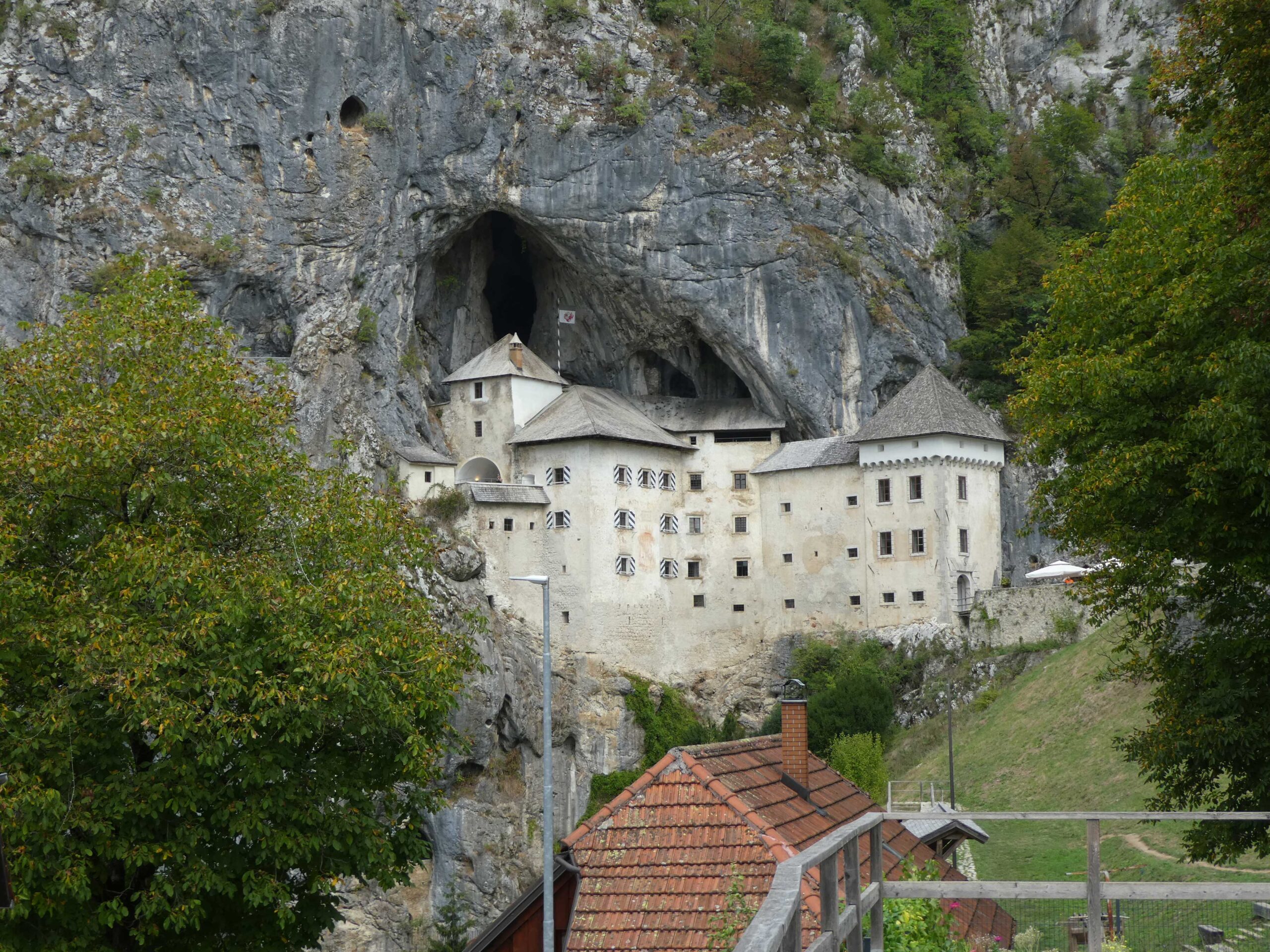
The Rick Steves guide book for Slovenia actually says that visiting the inside of the castle isn’t a must see. While we have followed his advice on many of our travels on the journey, he got it wrong on Predjama castle. The inside of the castle reveals the ingenuity of actually building the structure into the cliff.
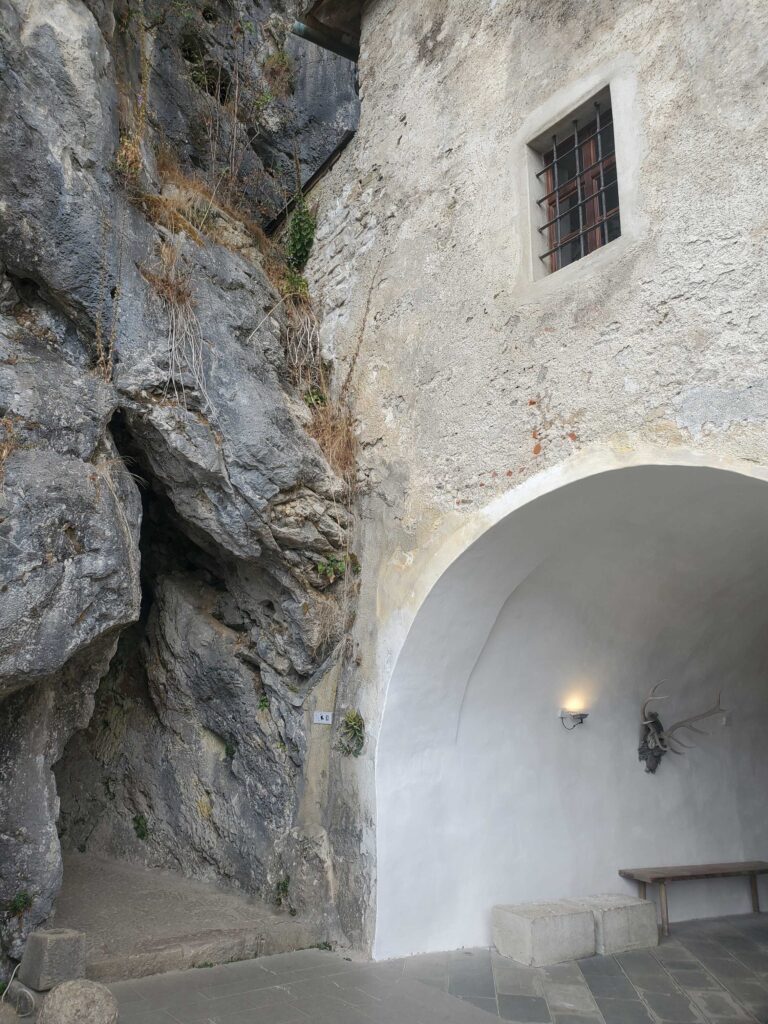
The further in you go, the more of the caves within the cliffs you actually discover. The residents of the castle could actually hide completely within the cave systems within the cliff. The caves also allowed them to come and go freely while under siege. We won’t give you the full story of the castle history, but you should read it on Wikipedia and other sources. The lord of the castle tormented his would-be conquerors by giving them gifts of food smuggled in and out through the caves until he was betrayed by a servant. As did Elvis, he met his end on the toilet.
Ptuj Grad
We already mentioned that we based ourselves for several days in the village of Ptuj. It was a good location to visit Slovenian wine country and take in the country sights. It is also overseen by Ptuj Grad on the hillside above town. Of course, we hiked up the hill from our B&B to visit the castle. There was a festival of reenactment going on while we were there, so we also experienced the locals in costume enjoying the history of the town and the castle. Here’s a couple of pictures of Ptuj Grad.

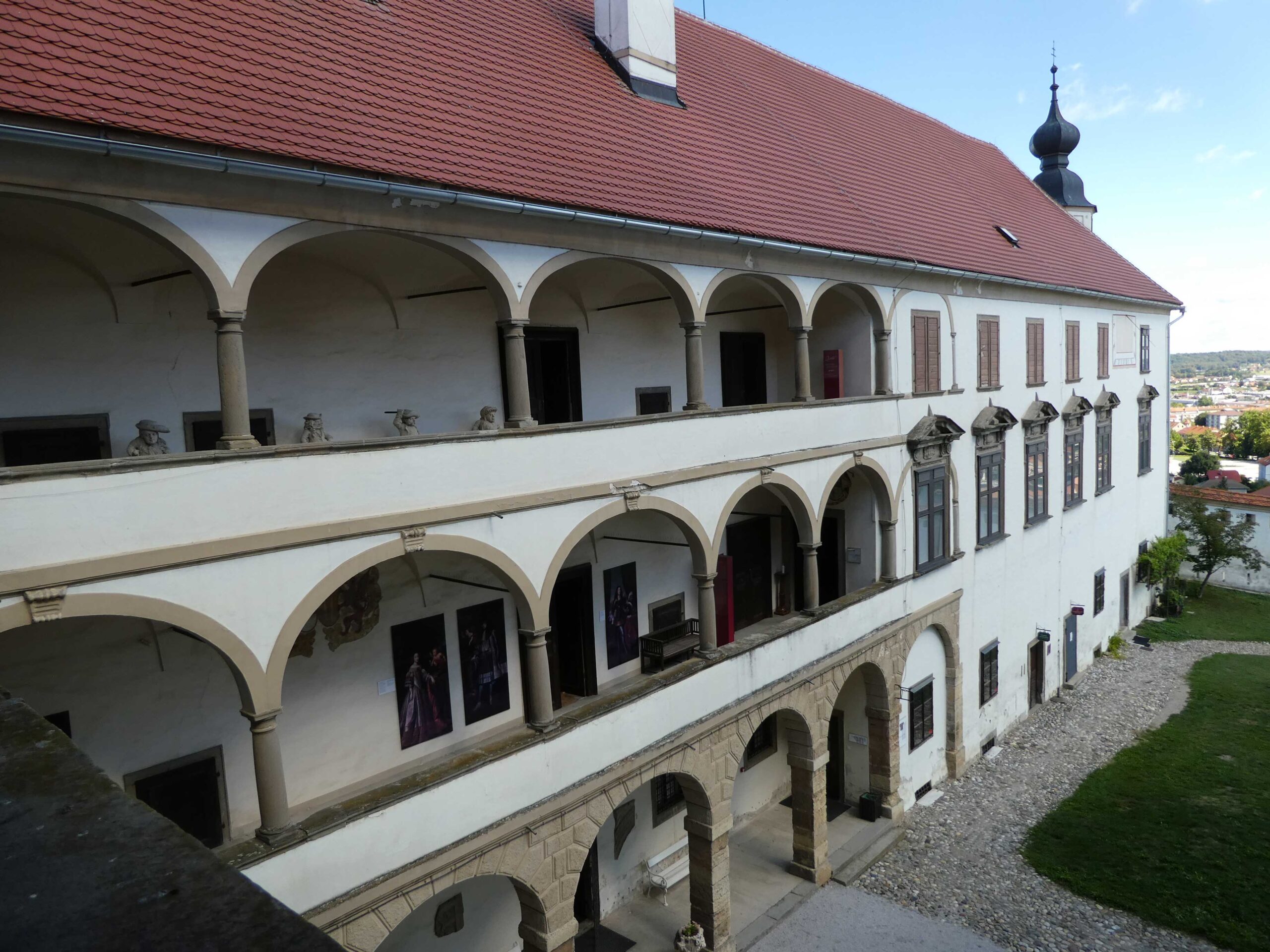
Grad Grad
So, we’ve gone on long enough. It was a lot to squeeze this much of Slovenia into one blog post. We hope you’ve enjoyed a bit of what we experienced and haven’t been overwhelmed. There’s much more we could have shared about each cave, castle, and drive. Ptuj castle had a wonderful museum of local folk culture and there are many, many more photos of Predjama Grad inside. It is getting late here in Florence in our hotel room as I try to finish this up on a Monday night with Ande trying to sleep.
One last bit we’ll share is our visit to Grad Grad. Yes, it was the castle in the town named Castle. So sharing Castle Castle seems somehow a fitting way to end. It was a bit out of the way, but one we were glad we visited. There were a lot of exhibits of wood working, rope making, and other crafts of medieval times that we haven’t experienced anywhere else. Here’s a picture of the interior courtyard of the castle to close out this post. We have so much more of Slovenia we wanted to share, but so little time while on the road. Visit yourself or catch up with us some other time. All the best!
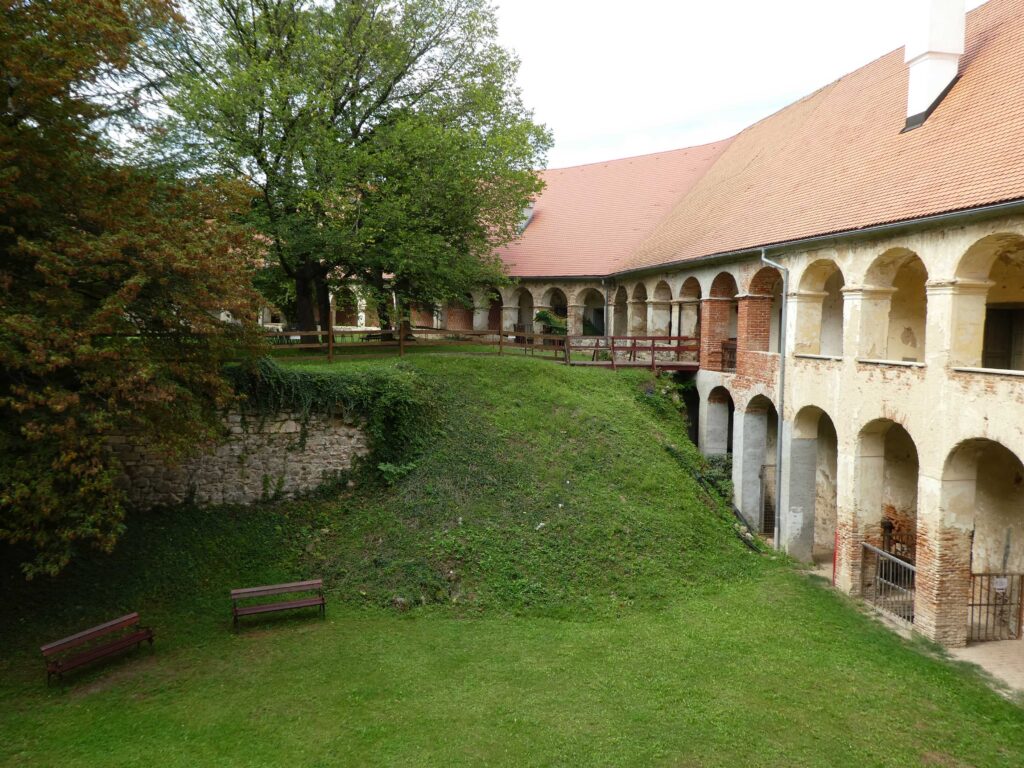
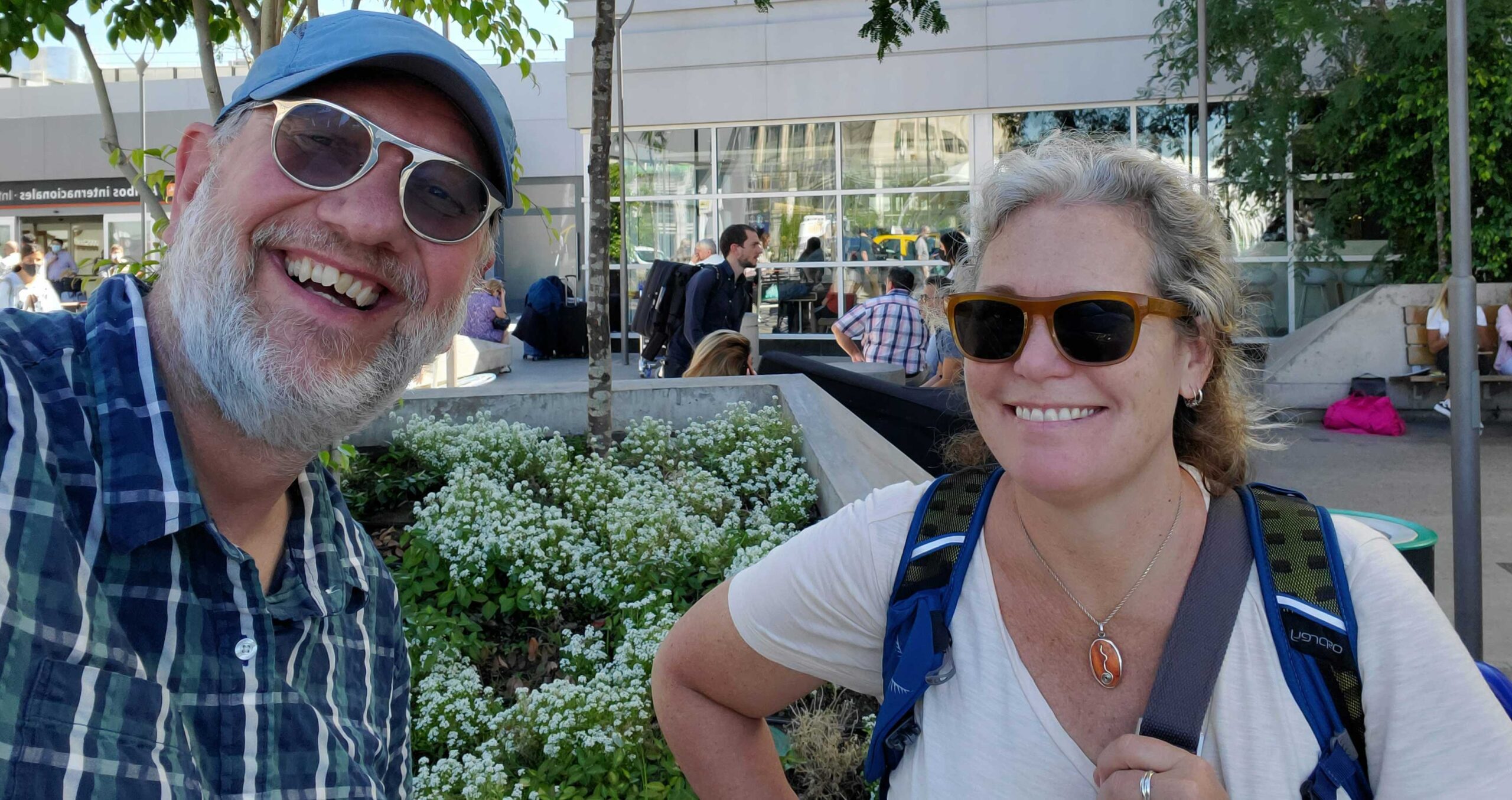
Beautiful pictures, all of them !! I thought the L ipp Horses were in Austria. I think maybe they claimed them during the war and after? Slovania wasnt, it was part of Yugoslavia..and not accessible in the 1960s.